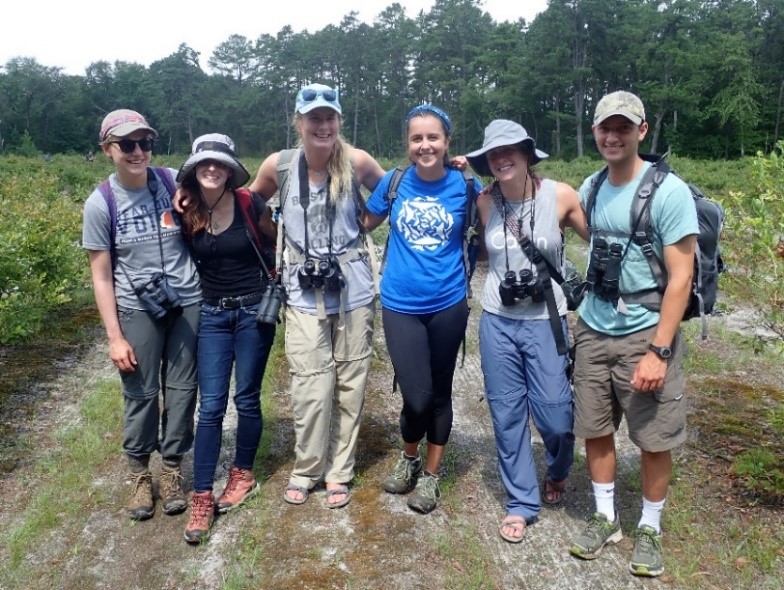
It was a busy, muddy summer with the Coastal Conservation Research Program interns. We were able to learn so much through their contributions, and had a great time doing it! The crew of six– all undergraduates or recent graduates – helped us collect data to monitor diamondback terrapins, coastal birds, horseshoe crabs, and, of course, the wetlands. In addition, they contributed to data analysis, outreach programs, and so much more, all the while gaining new experience with field skills, analytical approaches, and professional development that we hope will help them along their path. A significant portion of their summer was dedicated to the development and completion of independent research projects that included writing and delivering research proposals, collecting and analyzing data, and presenting the results of their work. They all showed off their accomplishments at our Annual Intern Symposium on August 6.
Pictured left to right: Kirstine Grab, Amanda Lyons, Amanda Lillie, Jamie Infanti, Sarah Kerr, Danny Stoner.
Intern Projects Overview
Kirstine Grab (University of Minnesota) located head-started terrapins using radio telemetry and examined habitat characteristics of their positions.
Jamie Infanti (University of Connecticut) monitored behavior and nest site selection of a mixed species colony of skimmers and terns.
Sarah Kerr (Clemson University) compared mass-specific physiological differences in head-started terrapins.
Amanda Lillie (Tufts University) evaluated our efforts to decrease mortality of nesting terrapins on coastal causeways.
Amanda Lyons (Brown University) compared methods for surveying terrapins in tidal creeks to determine more efficient and effective methods for future study.
Daniel Stoner (Kutztown University) explored habitat use and characteristics of Laughing Gull nests on a salt marsh island.
